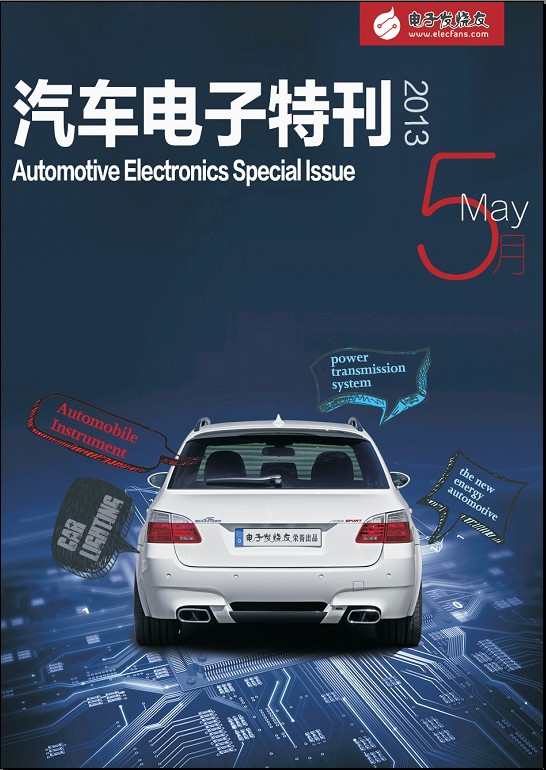Electronic enthusiast network : Advanced Driver Assistance System (ADAS) is no longer the exclusive right to drive for top cars. Driven by the regulations of the United States and Europe, mid-range vehicles with exhaust emissions of 2,000-3,000cc are expected to be equipped with ADAS in 2014, which will further expand the scale of ADAS applications and the ADAS battlefield will be filled with smoke.
At present, the development goal of the assisted driving system market is to reduce costs, increase penetration rate, and expand to the low-end automotive market. In view of this, we believe that a higher degree of system integration on a single platform will be the main trend. This means that if one or more cameras are installed in a car, they will be used to perform multiple driving assistance functions. In addition, other new trends will emerge, such as the existing passive security system or the image application market, which will further reduce the cost of the system.

Alix Coxon, Automotive Marketing Manager, Xilinx
Alix said that various in-vehicle network (V2V network or V2I network) systems are emerging. Through these networked systems, information about dangerous driving or accidents can be collected and communicated to vehicle drivers to take action in advance to reduce driving risks of.
Xilinx's innovative measures in the application of ADAS
The typical application of the current ADAS system is to use a multi-chip architecture to provide the real-time and high-speed computing performance requirements of the system.
Since the Xilinx Zynq-7000 series fully programmable SoC integrates the processor and FPGA in one chip, the BOM cost of the system can be reduced by about 25%, the overall power consumption is reduced by 50%, and the performance is compared to many current three-chip The solution (uP + DSP + FPGA) has increased by 130%. In addition, the flexibility of the system also allows developers to build multi-system integration based on different functions developed on the same platform.
The zynq-7000 fully programmable SoC chip developed by Xilinx is the industry's first system-level chip that closely integrates the ARM dual-core Cortex-A9 MPCore processing system and programmable logic on the same chip. Such a combination significantly improves performance, thereby improving the real-time nature of the intensive data processing of the driver assistance system. The programmability of the zynq-7000 device enables automakers and their electronic product suppliers to accelerate time to market, focusing on product innovation and rewriting their products to meet changing standards and specifications.
Alix emphasized that, compared with multi-chip solutions, using a single zynq-7000 series SoC chip can help manufacturers reduce BOM costs. In addition, the product based on the Zynq-7000 fully programmable system chip, in addition to the close integration of the ARM processing system and 28nm programmable logic, makes the power consumption of the SoC chip lower than multi-chip.
The Zynq-7000 fully programmable SoC will also undergo more stringent tests than the AEC-Q100 certification requirements, and will be launched under the Xilinx Automotive (XA) product line to ensure that it meets the most stringent environmental requirements commonly found in automotive applications, including Temperature, quality and reliability requirements.
It is precisely because of the excellent function of the Zynq-7000 All Programmable SoC chip, Xilinx Alliance program certified member-video professional company Xylon adopted it as the core of the LogiADAK Zynq-7000 SoC automotive driver assistance kit. This real-time ADAS optimized development platform enables automakers and automotive electronics suppliers to focus on product innovation and feature development by combining their own software / hardware IP with high-performance reprogrammable SoCs without having to The hardware configuration or software system is distracted to create a unique differentiated driver assistance application.
The LogiADAK Zynq-7000 All Programmable SoC automotive driver assistance kit is the first solution of its kind that integrates fully programmable software / hardware in a single device, provides a high-speed software / hardware interface, and can be run on an embedded ARM processing system Software to implement O / S and application processing.
Automotive safety requirements upgrade Xilinx All Programmable to strengthen safety design
Alix pointed out that advanced driver assistance system technology is still in the process of continuous change. Technology is constantly improving to improve the performance of the system. Related standards and consumer preferences are also being gradually adjusted and tested. This means that such solutions need to have some flexibility to support changes throughout the development process. At the same time, it must have a very high computing power to provide real-time processing of multiple cameras. All of these pose great challenges to manufacturers. Fortunately, Xilinx ’s fully programmable SOC chip provides an ideal and cost-effective solution to these challenges.
In addition, according to the requirements of functional safety standards, semiconductor manufacturers need to evaluate each component of their products and how they achieve the safety performance of the system. This does not mean that manufacturers like Xilinx who have developed stricter functional safety devices in other markets (such as aerospace and defense, industrial and medical applications, etc.) can easily meet the needs of the market. The real challenge is to develop effective, economical and efficient solutions.
As more and more countries promulgate laws such as automotive ADAS and everyone's strong interest in driving perception systems, designers are facing the double challenge of providing high-performance automotive systems and ensuring low cost and low power consumption. These image automotive vision systems must effectively analyze the input signals acquired from the multi-camera mode at different stages of the ADAS processing function, such as perception capabilities, environmental characteristics, and decision making.
Xilinx All Programmable automotive solutions (such as the Zynq â„¢ -7000 All Programmable SoC combined with the ARM dual-core Cortex â„¢ -A9 core processing system) will help engineers overcome these challenges. These All Programmable solutions have absolute advantages over previous multi-chip solutions, and they have a higher level of integration and can play the best level of hardware resources and scalable performance from low-end ADAS to high-end ADAS.
FPGA is expected to become the mainstream solution of ADAS in the future
In China, the market's demand for assisted driving systems is growing rapidly, and these technologies are also widely used in Chinese-made cars. Currently, sales of German luxury models in China are steadily increasing. Most of these vehicles are equipped with advanced driver assistance systems, which also means that the new concept of driver assistance is gradually being accepted by the high-end market.
In addition, some international auto parts suppliers are entering the Chinese market through local suppliers. At the same time, local suppliers are also developing their own systems. These market competitions may promote the reduction of system costs and penetration into the low-end market. Eventually expand the penetration of driving assistance systems.
On the other hand, whether the Chinese government, like other countries and regions, has introduced some mandatory automobile safety standards and regulations is also a very important factor in the development of the market.
The advanced driver assistance system (ADAS) is quickly becoming the new selling point of a new generation of mid-to-high-end cars. At present, high-end cars such as BMW, Mercedes-Benz and Audi have already adopted ADAS as standard equipment. Competing to develop ADAS so as to get a share of this fast-growing emerging market. Currently, there are three common ways to implement ADAS: DSP, FPGA and MPU, but the excellent multi-channel high-definition processing capability of FPGA is expected to make it the mainstream implementation of ADAS in the future.
This article is adapted from the May issue of "Automotive Special Issue" 
——All rights reserved by Electronic Fans. Please indicate the source when reprinting!
Flush Mount USB Socket,USB Charger,Flush Mount Socket With USB Port,USB Flush Mount Socket
Dongguan baiyou electronic co.,ltd , https://www.dgbaiyou.com